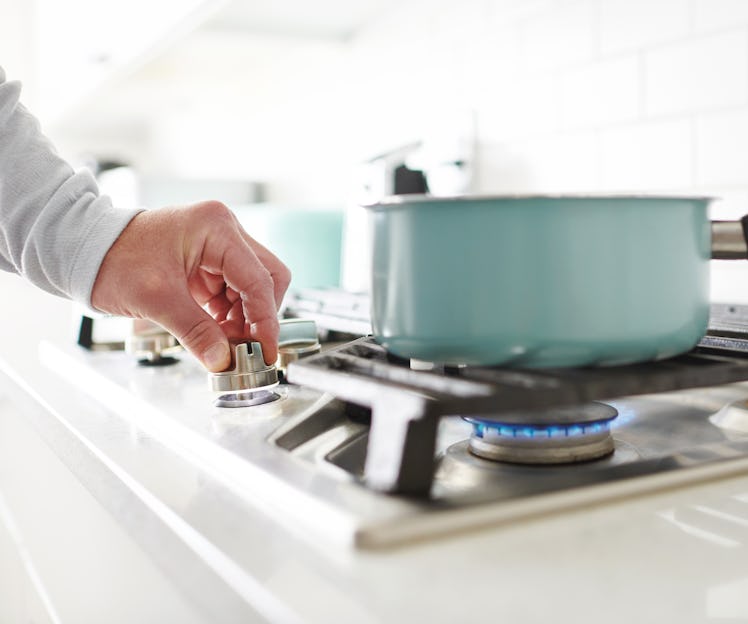There's Another Serious Reason To Ditch Your Gas Stove
But finding a better alternative is easier said than done.

Long a mainstay of the family kitchen, the gas stove has been undergoing a radical reassessment as the research into the dangers it presents — from leaks, dangerous fumes, methane, benzene, and more — continues to pile up. Now a new study from researchers at the University at Buffalo has found that the fumes from gas stoves and other “unclean cooking fuel” can lead to developmental delays in infants and young children.
The research team wanted to determine if using unclean fuel — which includes anything that burns, from gas and propane to wood — had any lasting effects. To do so, they examined data collected from 4,735 mother-child pairs enrolled in the Upstate KIDS Study, a long-term study meant to evaluate milestones from birth to age 3. They found that children exposed to unclean fuel from in utero to the age of 3 were 52% more likely to develop gross motor delays, 36% more likely to develop personal-social delays, and 28% more likely to develop any delays at all.
The University of Buffalo study is just the latest in a stream of studies into the adverse health effects of gas stoves and indoor air pollution — in response to those findings, many states have made moves to ban natural gas in new construction, with some success. One 2022 study found that gas stoves leak dangerous levels of methane and other gasses even when turned off. A second study found that as many as 12% of childhood asthma cases are linked to the presence of a gas stove in the home. Another study found gas stoves are as bad for your lungs as secondhand smoke.
The new study is significant because, while cigarette or secondhand smoke is known to be harmful in pregnancy, “cooking fuel may not be viewed the same way,” says study co-author Alexandra Grippo, who worked on the study while pursuing her master’s in epidemiology at UB’s School of Public Health and Health Professions. “Gas stoves are a main contributor to indoor carbon monoxide and nitrogen dioxide levels, with some families using them multiple times a day. Infants and young children spend more time indoors and are particularly vulnerable to indoor pollutants because they are not fully developed.”
The only way to fully eliminate the risk of gas stove exposure for you and your kids is to replace your gas range with an electric one and have your gas line capped by a pro. Though replacing an appliance is pricey, federal programs like the Inflation Reduction Act rebates could slash the cost of replacing your range — moderate-income households, are eligible for up to $840 off an electric stove.
But replacing an appliance may not be an option for many, many families, no matter how risky exposure may be. Experts who previously spoke to Fatherly say there are still more affordable measures that could reduce some of your exposure.
Opening a kitchen window and turning on your range hood or ventilation fan above your stove helps, as does using an electric hot plate when possible. You can also buy an air purifier for your kitchen — those rated for volatile organic compounds (VOCs) will pull harmful pollutants from your gas stove out of the air. Set up a fan blowing through an open window — so long as you turn it on before you start cooking. Basic home maintenance will also help: keeping your carbon monoxide detectors running, cleaning your filters with soap and water, and making sure the flames on your gas stove are blue-tipped, not yellow-tipped, will also keep you safer.